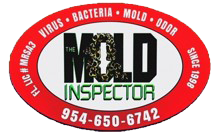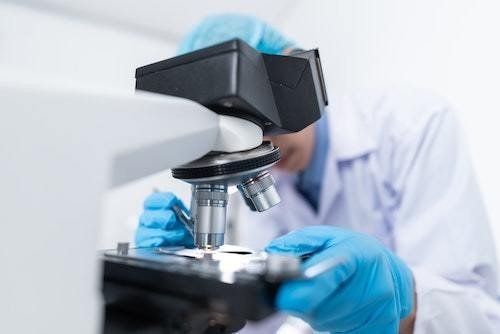Is This Clean?
Is It Really Clean? How Can I Be Sure?
Is This Clean?
Is It Really Clean?
How Can I Be Sure?
Contact Southeast Florida’s
Most Experienced Mold Assessor

We will get back to you as soon as possible.
Please try again later.
Is This Clean? Is It Really Clean? How Can I Be Sure?
Contact Southeast Florida’s
Most Experienced Mold Assessor

We will get back to you as soon as possible.
Please try again later.
SURFACE CLEANLINESS VERIFICATION
RESTORING CONSUMER & EMPLOYEE CONFIDENCE
FIND OUT HOW YOU CAN DISPLAY YOUR CERTIFICATE TODAY
Get your surfaces tested for viruses, bacteria & other organic traces and verified as clean today.
Newspapers, television networks, government agencies and others are reporting the health and safety challenges related to intense communicable disease events.
Whether it’s a microscopic peril, such as Influenza, COVID-2, COVID-19, H1N1 or other contaminants, we all want to know just one thing…IS THIS SURFACE CLEAN & HOW CAN WE VERIFY THAT IT IS CLEAN?
Luckily, THE MOLD INSPECTOR has the ability and technology to discover the presence of certain molecular structures that all these microscopic perils have in common.
Scientifically engineered and chemically treated swabs are designed to collect ORGANIC TRACES such as ATP (Adenosine Triphosphate) that can be detected on frequently touched surfaces, known as HIGH TOUCH surfaces to discover the presence of CLEAN or UN-CLEAN surface conditions in those specific areas.
In simple terms, ATP is a molecule that is found in and around living cells, and because of this we can take a direct measurement of its biological concentration and health.
The CDC (Center for Disease Control) RECOGNIZES THE USE OF ATP BIOLUMINESCENCE FOR THE MEASUREMENT OF ORGANIC TRACES ON SURFACES to evaluate cleanliness. The CDC also indicates that the measurement of organic ATP on surfaces incorporates the use of a specialized swab and a light emitting reagent (luciferase) in conjunction with a luminometer to provide a quantifiable expression in terms of RLUs (relative light units). The amount of light produced is directly proportional to the amount of biological energy present in the sample. THE NCBI (National Center for Biotechnology Information) ALSO REFERENCES THE STABILITY AND USE OF ATP ON SURFACES AS A GOOD MARKER TO MONITOR CLEANING AND ITS ABILITY TO VERIFY CLEANLINESS LEVELS in common areas, meeting rooms and offices. ATP has even been used successfully for cleanliness verification in the food service industry for more than 30 years.
SURFACE CLEANLINESS VERIFICATION
RESTORING CONSUMER & EMPLOYEE CONFIDENCE
FIND OUT HOW YOU CAN DISPLAY YOUR CERTIFICATE TODAY
Get your surfaces tested for viruses, bacteria & other organic traces and verified as clean today.
Newspapers, television networks, government agencies and others are reporting the health and safety challenges related to intense communicable disease events.
Whether it’s a microscopic peril, such as Influenza, COVID-2, COVID-19, H1N1 or other contaminants, we all want to know just one thing…IS THIS SURFACE CLEAN & HOW CAN WE VERIFY THAT IT IS CLEAN?
Luckily, THE MOLD INSPECTOR has the ability and technology to discover the presence of certain molecular structures that all these microscopic perils have in common.
Scientifically engineered and chemically treated swabs are designed to collect ORGANIC TRACES such as ATP (Adenosine Triphosphate) that can be detected on frequently touched surfaces, known as HIGH TOUCH surfaces to discover the presence of CLEAN or UN-CLEAN surface conditions in those specific areas.
In simple terms, ATP is a molecule that is found in and around living cells, and because of this we can take a direct measurement of its biological concentration and health.
The CDC (Center for Disease Control) RECOGNIZES THE USE OF ATP BIOLUMINESCENCE FOR THE MEASUREMENT OF ORGANIC TRACES ON SURFACES to evaluate cleanliness. The CDC also indicates that the measurement of organic ATP on surfaces incorporates the use of a specialized swab and a light emitting reagent (luciferase) in conjunction with a luminometer to provide a quantifiable expression in terms of RLUs (relative light units). The amount of light produced is directly proportional to the amount of biological energy present in the sample. THE NCBI (National Center for Biotechnology Information) ALSO REFERENCES THE STABILITY AND USE OF ATP ON SURFACES AS A GOOD MARKER TO MONITOR CLEANING AND ITS ABILITY TO VERIFY CLEANLINESS LEVELS in common areas, meeting rooms and offices. ATP has even been used successfully for cleanliness verification in the food service industry for more than 30 years.
Act Now…It’s Not Clean Until It’s Verified Clean
Howard Newmark, Accredited Indoor Environmental Hygienist today
Call or text (954) 650-6742
MULTIPLE SOURCES OF DATA MAY BE CONSIDERED IN DETERMINING THE CLEANLINESS OF HIGH TOUCH SURFACES including, but not limited to, the type of surface tested, surface area tested, typical on-site operations and the RLUs (relative light units) observed via the Bioluminescence Luminometer. Additional information regarding the use of ATP Bioluminescence has been presented in a variety of research and studies that have appeared in scientific/hygiene related articles and journals such as, The Sanitarian's File, Science Direct Journal of Hospital Infection, and Journal of Occupational and Environmental Hygiene.
SAFETY DATA SHEET INFORMATION REGARDING THE SPECIALLY DESIGNED SWAB, THE HYGIENA SUPERSNAP (SUS3000) IS NOT CLASSIFIED AS HAZARDOUS according to OSHA Hazard Communication Standard 29 CFR 1910.1200, Regulation EC No. 1272:2008 [CLP/GHS] and WHIMS (HPR) Hazardous Products Regulation SOR 2015-17.
It is important to keep in mind that environmental hygiene, safety and public health conditions are constantly changing. Therefore, in an abundance of reason, prudency and caution it can be helpful to be proactive and FREQUENTLY CHECK WITH FEDERAL GOVERNMENTAL AGENCIES INCLUDING, BUT NOT LIMITED TO, OSHA, NIOSH, CDC AND USEPA WEBSITES FOR UPDATED INFORMATION related to environmental hygiene, safety and public health.
ACCORDING TO THE CDC, THERE IS MUCH TO LEARN ABOUT THE NOVEL CORONAVIRUS (SARS-COV-2) THAT CAUSES CORONA VIRUS DISEASE 2019 (COVID-19). Based on what is currently known about the virus and about similar coronaviruses that cause SARS and MERS, spread from person-to-person happens most frequently among close contacts (within about 6 feet). Current evidence suggests that SARS-CoV-2 may remain viable for hours to days on surfaces made from a variety of materials. Cleaning of visibly dirty surfaces followed by disinfection is a best practice measure for prevention of COVID-19 and other viral respiratory illnesses in community settings.
Additional information related to healthcare facilities and interim infection prevention and control recommendations for patients with suspected or confirmed COVID-19 in healthcare settings can be found on the CDC website.
CHECK THE CDC WEBSITE FOR UPDATES RELATED TO COVID-19.
MULTIPLE SOURCES OF DATA MAY BE CONSIDERED IN DETERMINING THE CLEANLINESS OF HIGH TOUCH SURFACES including, but not limited to, the type of surface tested, surface area tested, typical on-site operations and the RLUs (relative light units) observed via the Bioluminescence Luminometer. Additional information regarding the use of ATP Bioluminescence has been presented in a variety of research and studies that have appeared in scientific/hygiene related articles and journals such as, The Sanitarian's File, Science Direct Journal of Hospital Infection, and Journal of Occupational and Environmental Hygiene.
SAFETY DATA SHEET INFORMATION REGARDING THE SPECIALLY DESIGNED SWAB, THE HYGIENA SUPERSNAP (SUS3000) IS NOT CLASSIFIED AS HAZARDOUS according to OSHA Hazard Communication Standard 29 CFR 1910.1200, Regulation EC No. 1272:2008 [CLP/GHS] and WHIMS (HPR) Hazardous Products Regulation SOR 2015-17.
It is important to keep in mind that environmental hygiene, safety and public health conditions are constantly changing. Therefore, in an abundance of reason, prudency and caution it can be helpful to be proactive and FREQUENTLY CHECK WITH FEDERAL GOVERNMENTAL AGENCIES INCLUDING, BUT NOT LIMITED TO, OSHA, NIOSH, CDC AND USEPA WEBSITES FOR UPDATED INFORMATION related to environmental hygiene, safety and public health.
ACCORDING TO THE CDC, THERE IS MUCH TO LEARN ABOUT THE NOVEL CORONAVIRUS (SARS-COV-2) THAT CAUSES CORONA VIRUS DISEASE 2019 (COVID-19). Based on what is currently known about the virus and about similar coronaviruses that cause SARS and MERS, spread from person-to-person happens most frequently among close contacts (within about 6 feet). Current evidence suggests that SARS-CoV-2 may remain viable for hours to days on surfaces made from a variety of materials. Cleaning of visibly dirty surfaces followed by disinfection is a best practice measure for prevention of COVID-19 and other viral respiratory illnesses in community settings.
Additional information related to healthcare facilities and interim infection prevention and control recommendations for patients with suspected or confirmed COVID-19 in healthcare settings can be found on the CDC website.
CHECK THE CDC WEBSITE FOR UPDATES RELATED TO COVID-19.
-
Meet Howard
Southeast Florida’s first licensed Mold Assessor. Approved by The State of Florida as a DBPR Mold Related Services course author & instructor.
-
Mold Inspection
Howard uses an objective and scientific approach to inspections. Howard does not perform remediation, so there is never a conflict-of-interest.
-
Mold Testing
Our testing services will determine the type of mold in your property and how much of it you may be breathing.
-
Health Concerns
According to the USEPA; Molds have the ability to cause health problems. If you are experiencing a building related illness (BRI) don’t wait, call an experienced professional today.
-
Expert Witness
Howard Newmark, AIEH, CIEC, MRSA3 is an accomplished and credentialed IAQ professional. His attentive and keen Peer Review skills make him a potent asset to any case.
-
Get Started
Do you have a mold issue?
Is your property is making you sick?
Do you need a professional?
Speak to Howard today
-
Meet Howard
Southeast Florida’s first licensed Mold Assessor. Approved by The State of Florida as a DBPR Mold Related Services course author & instructor.
-
Mold Inspection
Howard uses an objective and scientific approach to inspections. Howard does not perform remediation, so there is never a conflict-of-interest.
-
Mold Testing
Our testing services will determine the type of mold in your property and how much of it you are breathing
-
Health Concerns
According to the USEPA; Molds have the ability to cause health problems. If you are experiencing a building related illness (BRI) don’t wait, call an experienced professional today.
-
Expert Witness
Howard Newmark, CIEC, AIEH, MRSA3 has extensive experience and qualifications in Indoor Air Quality, and Mold Inspection & Testing that will provide a powerful influence on the result of your case.
-
Get Started
Do you have a mold issue?
Is your property is making you sick?
Do you need a professional?
Speak to Howard today
Signs of Poor Indoor Air Quality
Are you experiencing any of the following symptoms consistently while at your home or office? If so, there may be an issue with your indoor air quality. Call The Mold Inspector to schedule a property inspection today.
- Dryness and irritation of the eyes, nose, throat, or skin
- Headaches
- Fatigue
- Shortness of breath
- Hypersensitivity / Allergies
- Sinus Congestion
- Coughing and Sneezing
- Dizziness
Monday - Friday: 8:00am - 7:00pm
Sunday: Closed
Saturday: 10:00am - 2:00pm
Monday - Friday: 8:00am - 7:00pm
Sunday: Closed
Saturday: 10:00am - 2:00pm
Monday - Friday: 8:00am - 7:00pm
Sunday: Closed
Saturday: 10:00am - 2:00pm







